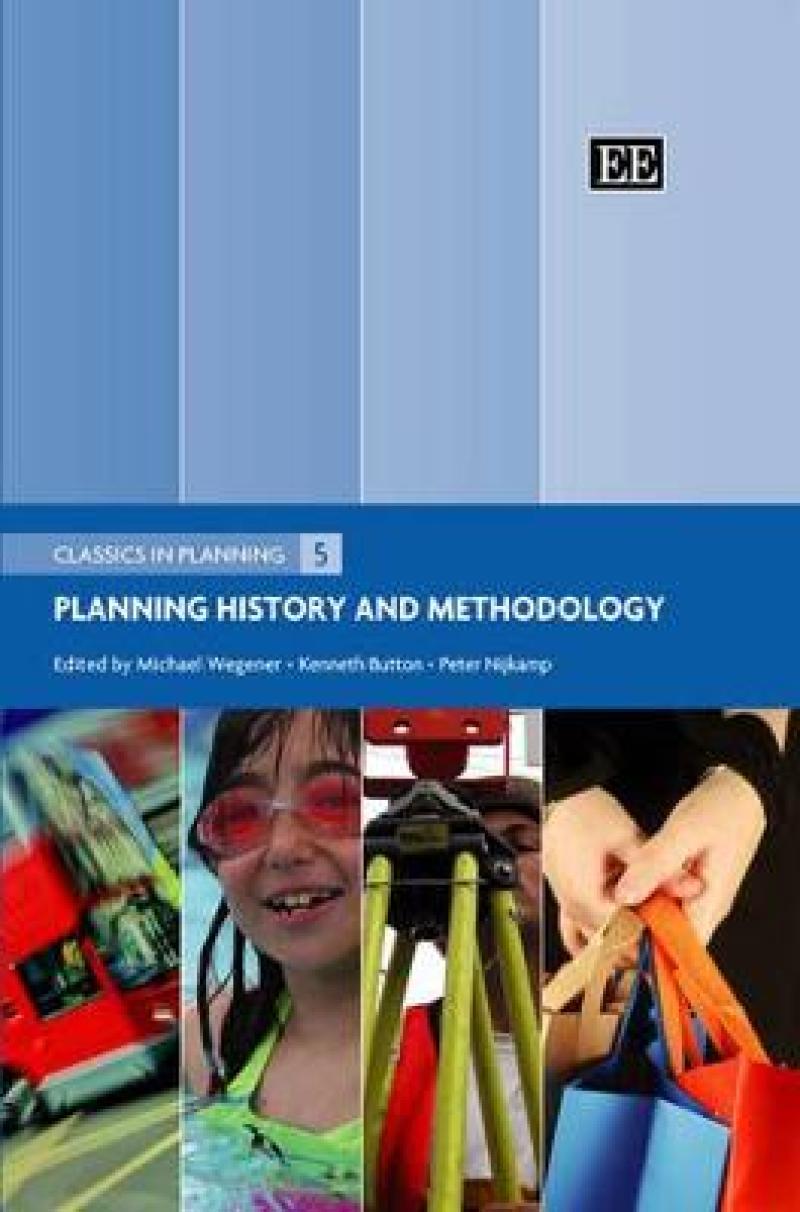Planning as deliberate preparation for future action is as old as human history. Agricultural land allocation and cities were always planned, as were military warfare and defence. With the growing complexity of society in the 19th century, however, planning became a discipline and profession. Since then, not only has the perception of planning and its role in society undergone significant change, but its instruments and methods have also evolved. This collection of classic papers by leading individuals of their day reflects how thinking about planning has changed over time. It also includes seminal papers on the methodology of planning to show how sophisticated techniques have been developed to meet the diverse demands of planning in a rapidly changing world.
Les mer
Planning as deliberate preparation for future action is as old as human history. It also includes seminal papers on the methodology of planning to show how sophisticated techniques have been developed to meet the diverse demands of planning in a rapidly changing world.
Les mer
Contents:
Acknowledgements
Series Preface Kenneth Button and Peter Nijkamp
Introduction Planning History and Methodology: Scoping the Scene Michael Wegener, Kenneth Button and Peter Nijkamp
PART I PLANNING HISTORY
1. Karl Mannheim ([1935] 1954), ‘The Concept of Social Control: Planning as the Rational Mastery of the Irrational’
2. Herbert A. Simon (1955), ‘A Behavioral Model of Rational Choice’
3. Charles E. Lindblom (1959), ‘The Science of “Muddling Through”’
4. Paul Davidoff and Thomas A. Reiner (1962), ‘A Choice Theory of Planning’
5. Amitai Etzioni (1967), ‘Mixed-Scanning: A “Third” Approach to Decision-Making’
6. J. Brian McLoughlin (1969), ‘The Guidance and Control of Change: Physical Planning as the Control of Complex Systems’
7. J.K. Friend and W.N. Jessop (1969), ‘The Nature of Planning’
8. Shoukry T. Roweis and Allen J. Scott (1981), ‘The Urban Land Question’
9. John Forester (1982), ‘Planning in the Face of Power’
10. Niklas Luhmann ([1986] 1989), ‘Complexity and Evolution’
11. John Friedmann (1989), ‘Planning in the Public Domain: Discourse and Praxis’
12. Patsy Healey (1998), ‘Collaborative Planning in a Stakeholder Society’
13. Andreas Faludi and Arnold van der Valk (1994), excerpts from ‘Part I: Background’ and ‘Part 6: Conclusions’
14. Peter Calthorpe (1993), ‘The Next American Metropolis’
PART II PLANNING METHODOLOGY
15. Patrick Geddes ([1915] 1968), ‘City Survey for Town Planning Purposes, of Municipalities and Government’
16. Walter G. Hansen (1959), ‘How Accessibility Shapes Land Use’
17. Christopher Alexander (1965), ‘A City is not a Tree. Parts 1 and 2’
18. Britton Harris (1965), ‘New Tools for Planning’
19. Ira S. Lowry (1965), ‘A Short Course in Model Design’
20. A.G. Wilson (1967), ‘A Statistical Theory of Spatial Distribution Models’
21. William Alonso (1968), ‘Predicting Best with Imperfect Data’
22. Jay W. Forrester (1969), ‘Notes on Complex Systems’
23. Horst W.J. Rittel and Melvin M. Webber (1973), ‘Dilemmas in a General Theory of Planning’
24. Torsten Hägerstrand (1970), ‘What about People in Regional Science?’
25. Alex Anas (1983), ‘Discrete Choice Theory, Information Theory and the Multinomial Logit and Gravity Models’
26. Ajit K. Dasgupta and D.W. Pearce (1972), ‘Social Welfare Functions’
27. Ralph L. Keeney and Howard Raiffa (1976), ‘The Problem’
28. Richard E. Klosterman (1997), ‘Planning Support Systems: A New Perspective on Computer-Aided Planning’
29. Ian Masser and Henk Ottens (1999), ‘Urban Planning and Geographic Information Systems
Name Index
Les mer
Produktdetaljer
ISBN
9781845420918
Publisert
2007-01-26
Utgiver
Vendor
Edward Elgar Publishing Ltd
Høyde
244 mm
Bredde
169 mm
Aldersnivå
UU, UP, 05
Språk
Product language
Engelsk
Format
Product format
Innbundet
Antall sider
464
